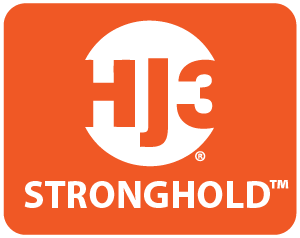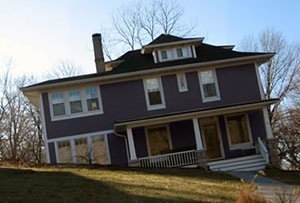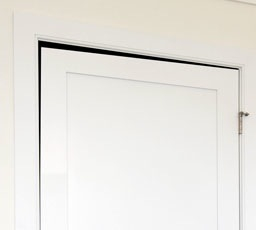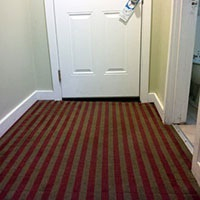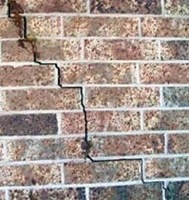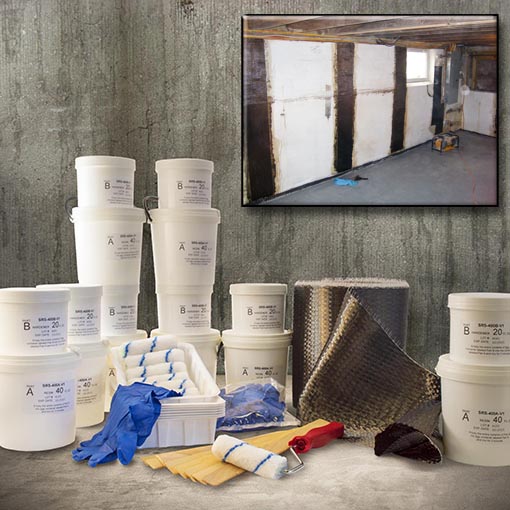Tell-Tale Signs of Foundation Problems
Several factors can play a role in damaging your home’s foundation. Unfortunately, most of these factors occur silently over time, and are therefore difficult to identify. But if your foundation is damaged, your home will let you know in other, less subtle manners. If you notice any of the following signs of foundation problems, you might want to consider contacting a foundation expert; many repairs can be relatively inexpensive if caught early enough.
-
Misaligned Doors and Windows.
When your doors and windows were installed, they were plumb. If they’re out of alignment now, it’s often an indicator that your foundation has shifted since your home’s initial build. If one of your doors won’t stay shut, swings open, or if it sticks, it could be caused by your shifting foundation (it could also just be that your door is improperly hung, so check that out first). Windows may be difficult to open, or they might have cracked glass as a result of possible foundation issues as well. If doors and windows in the same part of the house exhibit these issues, it’s likely that there’s a problem with the foundation beneath that part of the house.
-
Cracked Walls.
Walls will often crack at drywall seams as a result of the stress being placed on them by your settling foundation. Pay particular attention to the wall space around doors and windows. Oftentimes, a horizontal crack is the result of a bowing wall, which is a much more serious issue (if this is the case, you should look into repairing your wall immediately). If you do have cracked walls, StrongHold™’s Cracked Wall Repair Kit and Crack Injection Kits can fix them for good.
-
Sloping Floor.
A sloped floor is a sure sign that your foundation has shifted. If your floor is carpeted, the sloping will probably not be obvious, so place a bubble level at several places in the room to determine whether or not it is sloped, and if it is, the extent to which it’s sloped. On a wood, vinyl, or laminate floor, simply drop a marble or large steel ball bearing in several places throughout the house; if the ball rolls a significant amount, your floor is sloped. Pay attention to the direction that the ball is rolling to determine the general location of your failing foundation.
Keep in mind that most floors and not perfectly level; if the ball rolls a few inches in one direction or the other and stops, it doesn’t necessarily mean that your foundation is bad.
-
Exterior Cracks.
While small cracks in concrete or brick are common, large cracks that seem to follow a egular pattern are not, and should be investigated, especially if the cracks appear to be growing. Step patterns in your exterior wall could be an indicator that the ground behind or under them is shifting unevenly. If you have a chimney, check it for cracks as well, as a cracked chimney is a sign that your home’s frame itself is shifting as a result of your foundation. And if you do have external cracks, call or email StrongHold to see how our Crack Repair Kit can help you fix them fast.
-
Bulging or Bowing Walls
A good way to determine if your wall is bowed is to tie a string to a heavy coin (a quarter works perfectly) and holding the opposite end of the string against your wall until the quarter hits the floor. Hold the string against the middle part of your wall, where most bows will develop. If the quarter falls in front of the wall without touching it, your wall is bowed. Measure the distance from the quarter to the wall to determine the wall’s deflection; deflections of less than 2 inches are easily repaired with StrongHold’s Bowing Wall Kit.
-
Other Signs of Foundation Problems.
In temperate climates, many homes have a concrete foundation but actually rest on a beams and posts. If any of these posts are leaning, it’s a good indicator that your home has shifted its position.
Your home is your biggest investment, so you might as well do everything you can to protect it, right? Early detection of foundation issues can prevent costly repairs (or even collapse) down the road.
For more information about StrongHold’s carbon fiber systems and how they can save you 60 – 90% versus alternative repair options, email me at strsupport@hj3.com.
